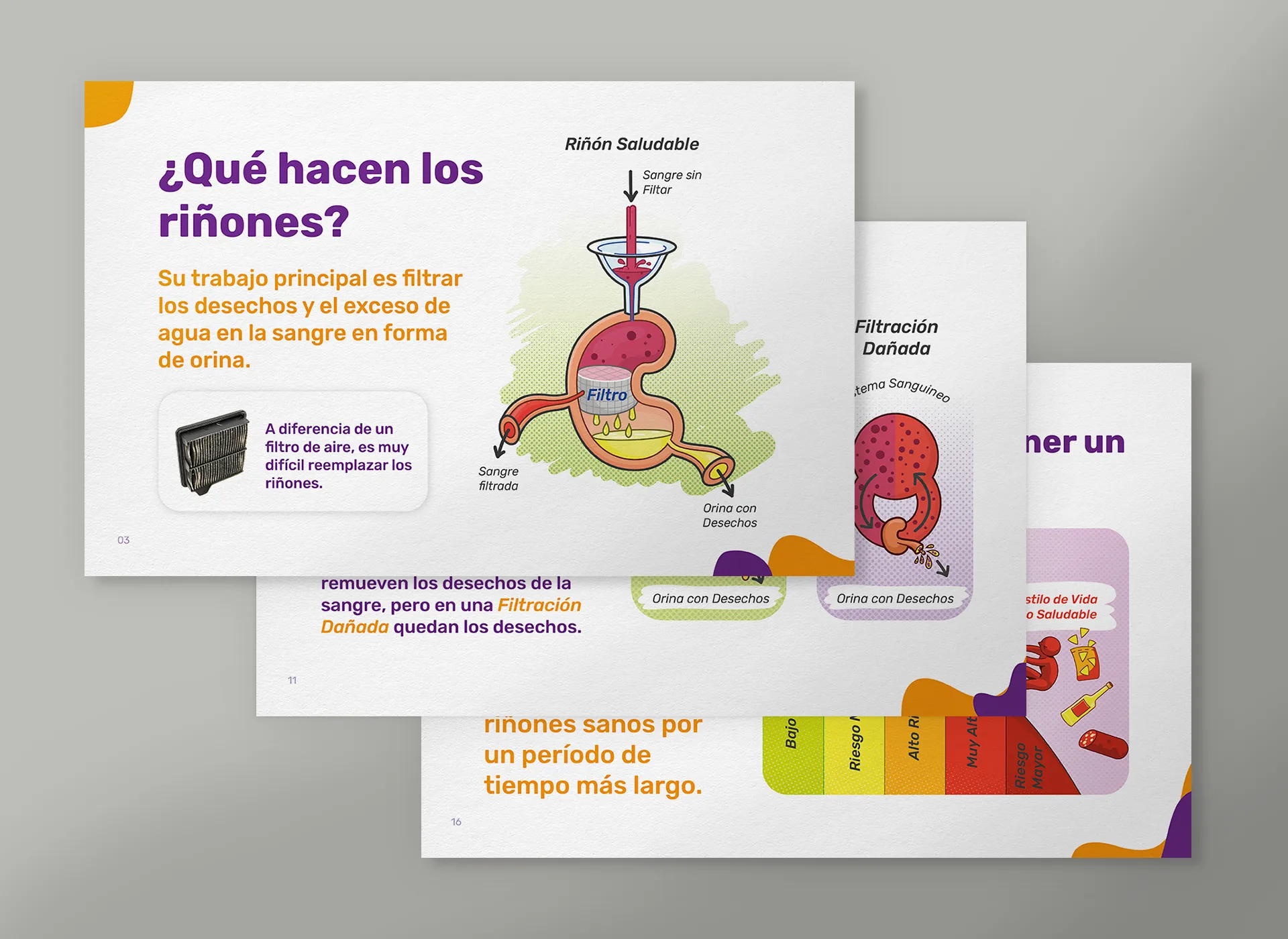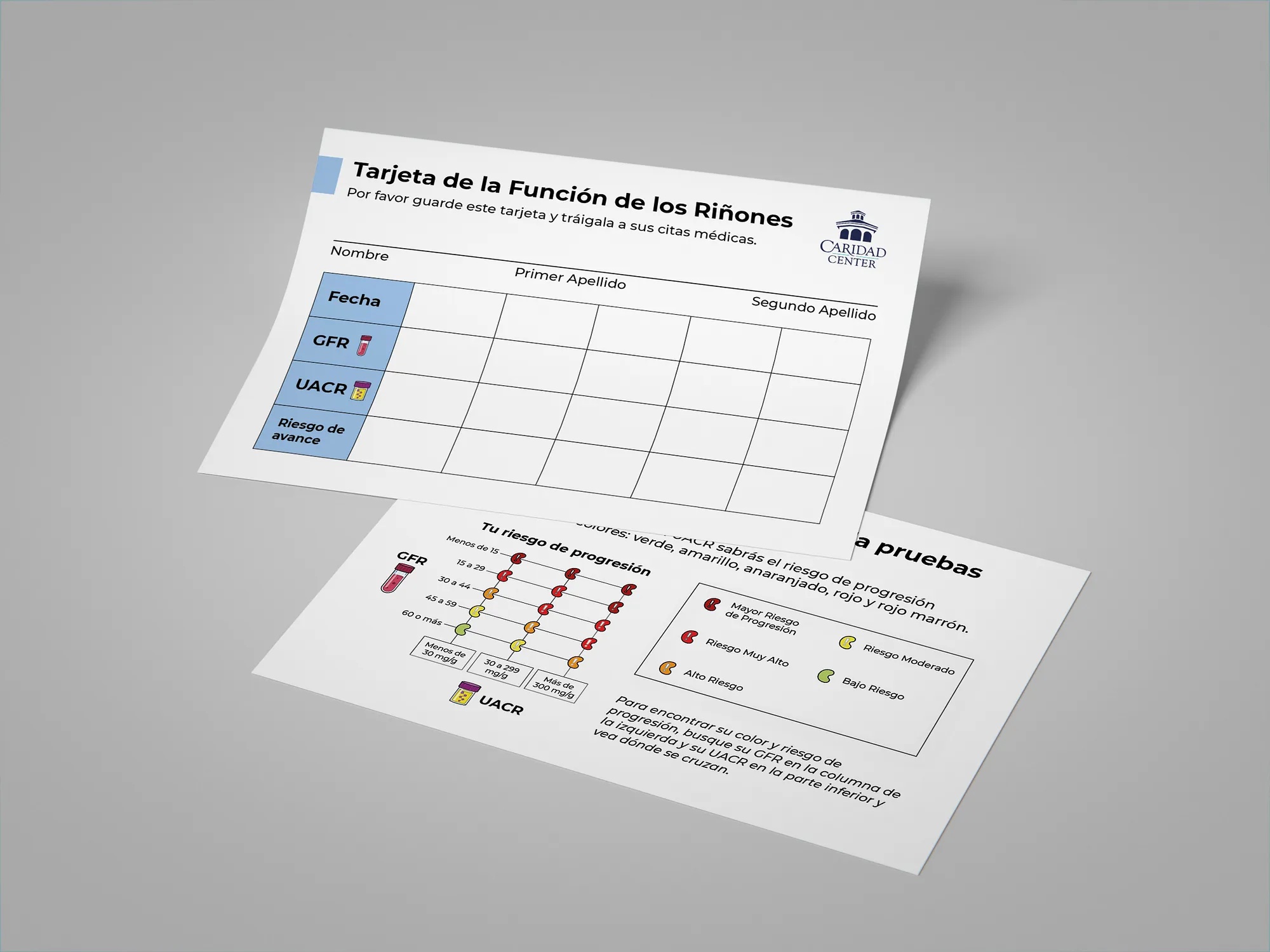


Chronic Kidney Disease (CKD) affects roughly 37 million adults in the United States. Another 20 million people are at risk of developing the disease.
Medically underserved and vulnerable populations are at much greater risk of CKD and exhibit worse outcomes, including higher mortality.
14% of hispanic adults have CKD as a result of disparities in things like education, language, and lack of health insurance.

Lack of awareness and low-quality CKD education leads to poor screening, poor management, and poor outcomes as a result of kidney disease.
Tailored, actionable patient education is a critical first step in a comprehensive strategy to improve kidney health outcomes in hispanic communities.
We partnered with Dr. Janet Diaz Martinez and Caridad Center, Florida’s largest free health clinic, to conduct participatory design with medically underserved and vulnerable Latino communities with or at risk for CKD to identify the common and consequential barriers to CKD screening.

Together with community members who had or were at heightened risk of kidney disease we co-created easy-to-understand, culturally and linguistically appropriate patient educational materials.
We developed materials in Spanish that made use of metaphors and illustrations that we workshopped together. In addition to a flip chart for CHWs to provide patient outreach and education, we developed bus-stop posters and lab result cards with easy to understand charts and graphics.

The materials we created were tailored to hispanic communities and addressed subgroup differences in order to increase screening in Latin community members with or at risk for CKD.
The new patient education materials are now being used. As summarized by Dr. Janet Diaz, Caridad is finding that:
“Feedback from patients regarding the educational materials has been overwhelmingly positive. Patients expressed feeling empowered and well-informed, and kidney disease testing increased. The educational materials have met and exceeded expectations, providing a valuable, high-quality, sustainable resource for the community.”